Jackfruit is an enormous, bulky, coarse fruit which, nevertheless, hangs from a not particularly tall tree with dark green leaves, which is widespread in gardens throughout Laos. The mature fruit contains a large number of shiny seeds enveloped in a brilliant yellow, sweet, filamentous pulp, which is commonly eaten.
Less commonly, in Laos, the fruit is eaten before it ripens, at which time it is less than half its full size and, finely cut, it is added to a soup of pork bones, to which one might also add the seeds, peeled, and at the same degree of maturity.
In the south of India, the Jackfruit, still green, is cooked as an ingredient with curry. In Cambodia, the mature seeds are eaten, either boiled or grilled, which does not seem to be the custom in Laos.
The wood core of the Jackfruit Tree is bright yellow, and before the development of synthetic dyes, it was one of the principle ways in which to dye the Laotian silk and cotton fabrics. Ornaments and trinkets are also carved from this yellow wood.
Throughout the tree is a milky sap which has anti-syphilitic and anti-vertigo properties; the seeds could well be fortifying and used as a tonic for lung ailments; the leaves are used as fodder because their secretion tastes like milk and is favoured by animals, so much so that in Vietnam the leaves are given to women as well as to sows! The wood might also serve as a sedative and in 1952, Petelot proposed rubbing the rough walls of a stone receptacle into which one had put a small amount of water and administering it to someone who is agitated.
In many regions of Laos, it is noted that pregnant women must refrain from eating Jackfruit because the child could be born with a skin infection. This analogical reasoning is without doubt supported by the fact that the soft central tissue of the trunk might have abortive properties. In any event, it is probable that this tree has quite a strong religious symbolism, since its leaves can replace those of the betel palm on offering trays.
Le fruit de jacquier est un énorme fruit boursouflé et rugueux accroché à même le tronc d’un arbre pas très grand, au feuillage vert foncé, très répandu dans les jardins au Laos. Le fruit mûr contient un grand nombre de grosses graines luisantes enveloppées dans une pulpe filamenteuse, d’un jaune brillant, sucrée, dégustée couramment. Plus rarement au Laos le fruit est consommé avant maturité; lorsqu’il n’est qu’à la moitié de sa taille normale, on le met, finement coupé, dans une soupe d’os de porc dans laquelle on peut aussi ajouter les graines, au même niveau de maturité, après les avoir épluchées. Dans le sud de l’Inde c’est avec du carry que l’on fait cuire le jaque encore vert. Au Cambodge on mange les graines mûres confites bouillies ou grillées ce qui ne semble pas se faire au Laos.
Le cœur du bois de jaquier est jaune vif, c’était avant les teintures synthétiques l’un des principaux moyens d’obtenir cette couleur pour teindre les soies et les cotons Lao. Des bibelots sont également fabriqués avec ce bois jaune.
Toutes les parties de l’arbre renferment un suc laiteux qui aurait des propriétés anti syphilitiques et vermifuges; les graines seraient toniques et pectorales; les feuilles sont parfois utilisées comme fourrage car elles auraient la propriété de favoriser la sécrétion de lait chez les animaux à tel point qu’au Vietnam elles sont données aux femmes et aux truies!
Le bois serait sédatif et Petelot (1952) propose d’en frotter les parois rugueuses d’un récipient de pierre dans lequel on a mis un peu d’eau et d’administrer cette boisson à la personne agitée.
Dans plusieurs régions du Laos on note que les femmes enceintes doivent se dispenser de manger du jaque car l’enfant naîtrait avec une maladie de peau; ce raisonnement analogique est sans doute appuyé par le fait que la moelle de l’arbre aurait des propriétés abortives. Il est de toute façon probable que cet arbre a une assez forte charge symbolique puisque ses feuilles peuvent remplacer celles du bétel sur les plateaux d’offrandes.
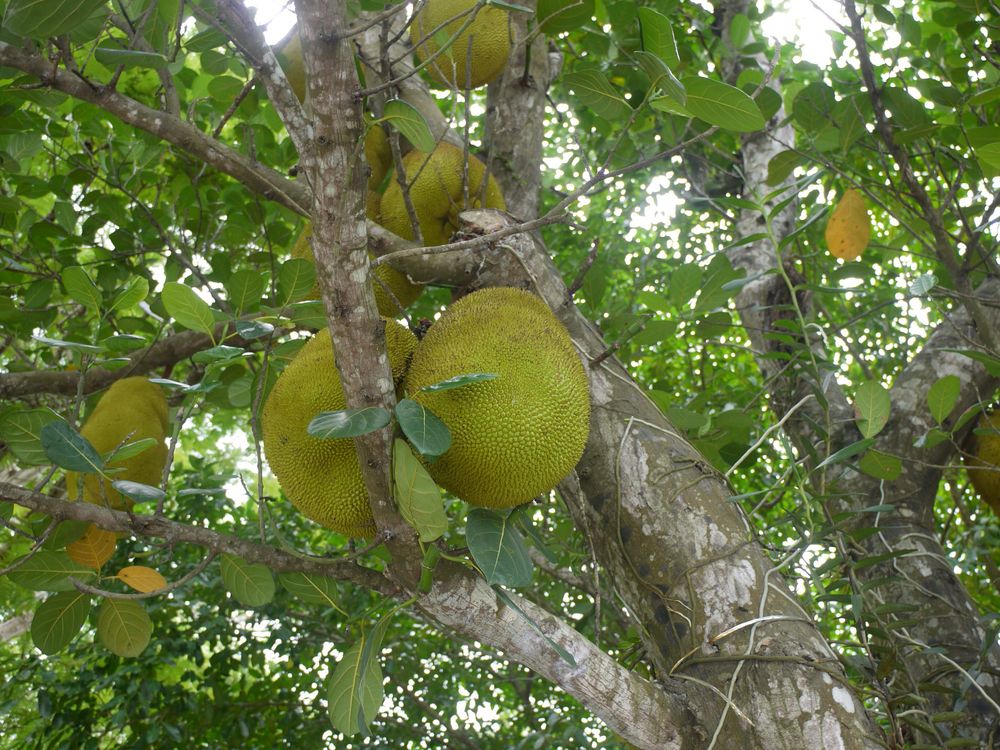
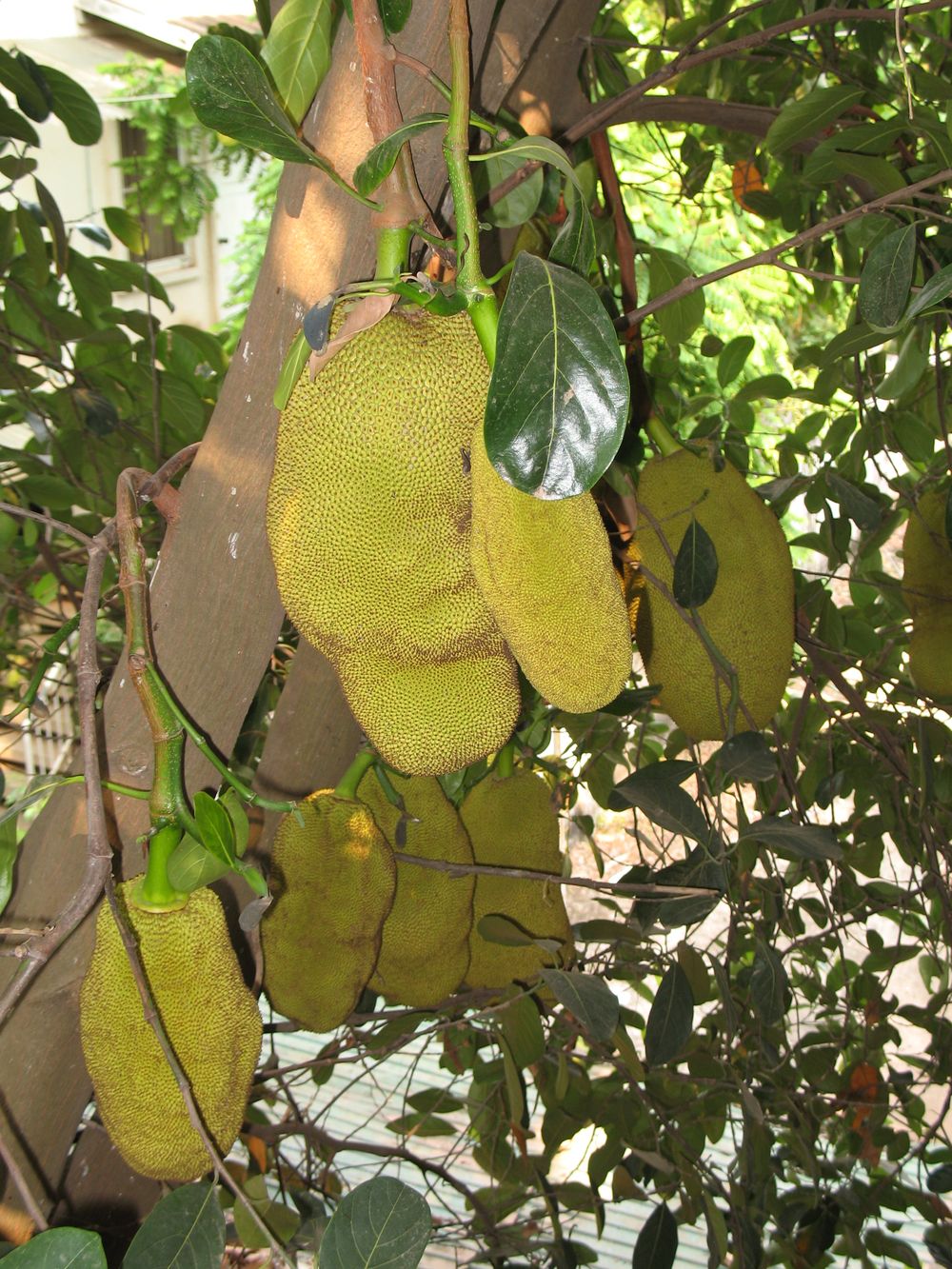
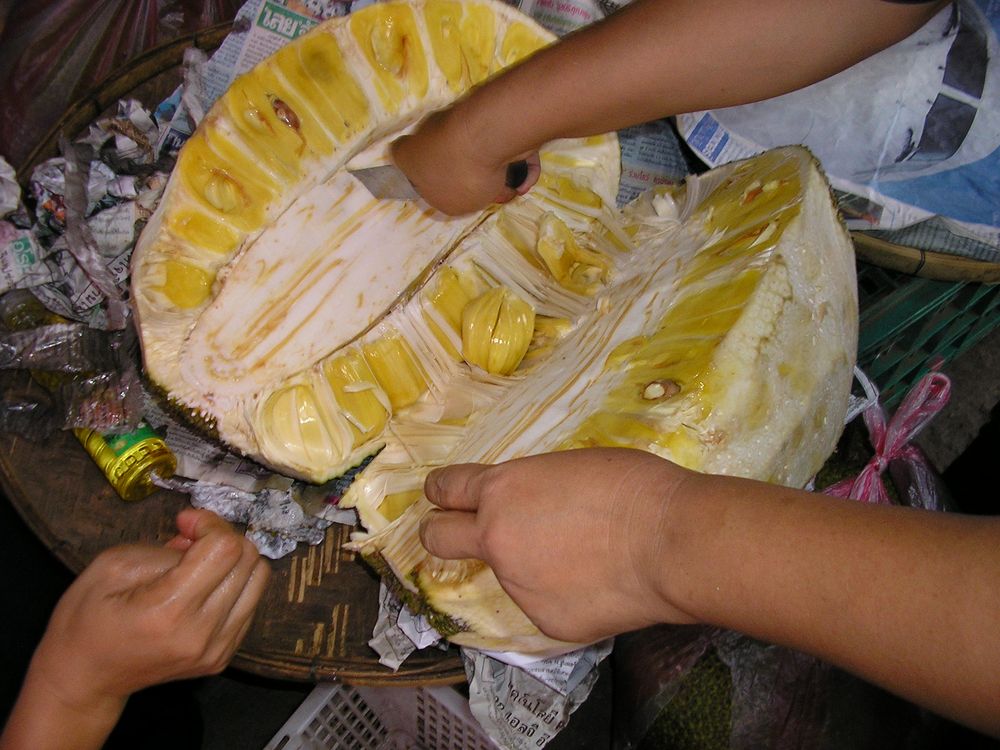
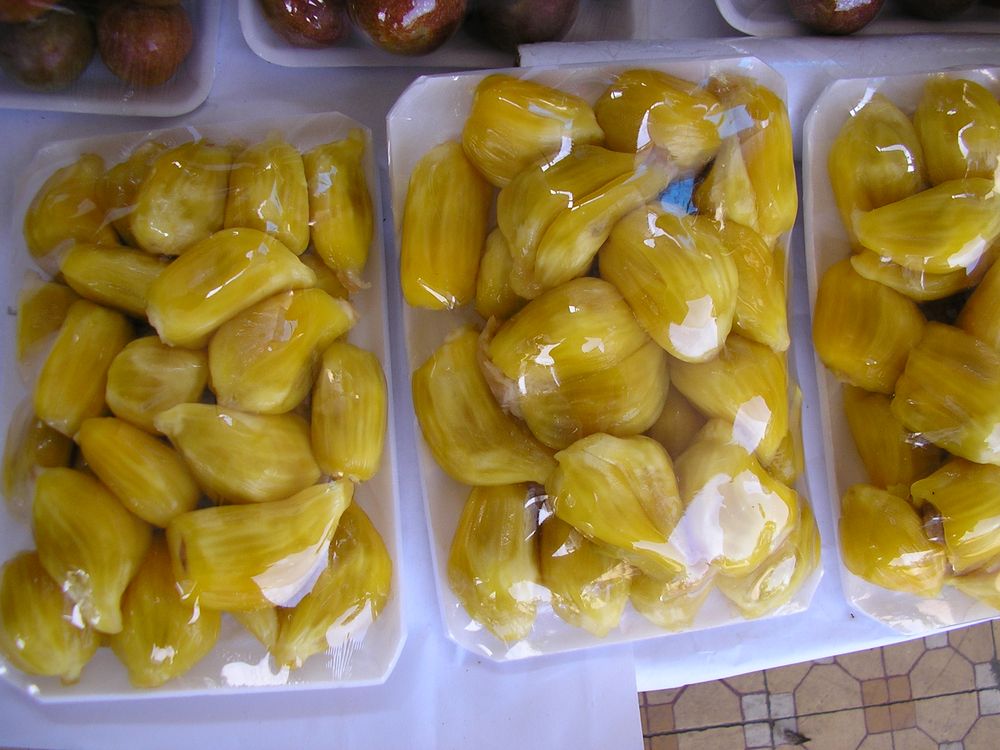
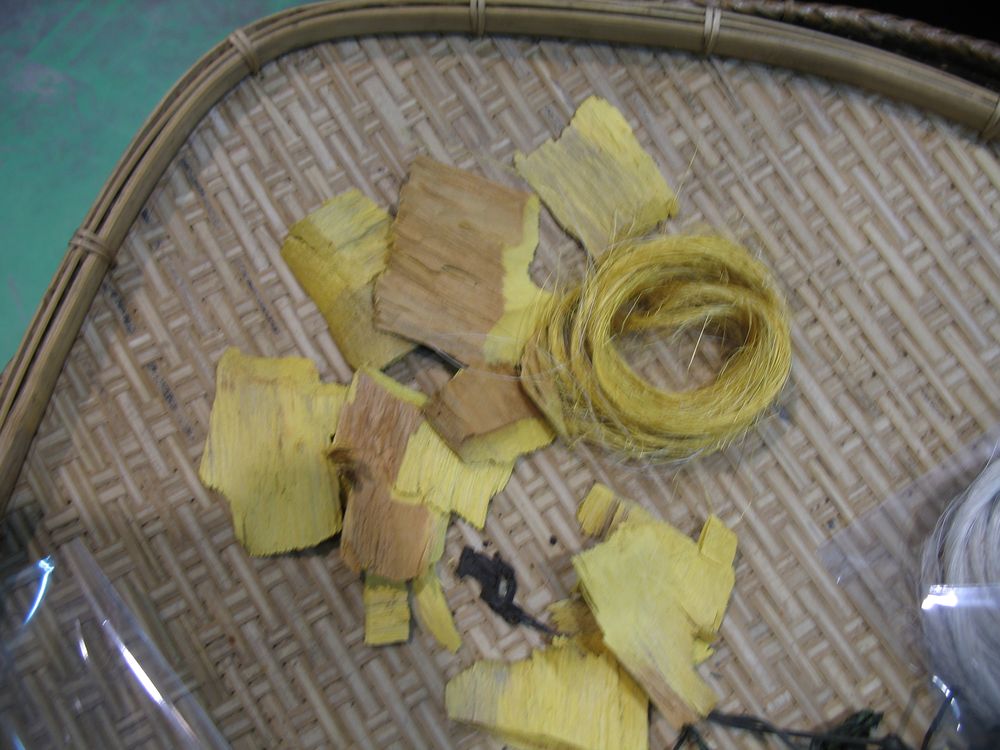
Jackfruit is an enormous, bulky, coarse fruit which, nevertheless, hangs from a not particularly tall tree with dark green leaves, which is widespread in gardens throughout Laos. The mature fruit contains a large number of shiny seeds enveloped in a brilliant yellow, sweet, filamentous pulp, which is commonly eaten.
Less commonly, in Laos, the fruit is eaten before it ripens, at which time it is less than half its full size and, finely cut, it is added to a soup of pork bones, to which one might also add the seeds, peeled, and at the same degree of maturity.
In the south of India, the Jackfruit, still green, is cooked as an ingredient with curry. In Cambodia, the mature seeds are eaten, either boiled or grilled, which does not seem to be the custom in Laos.
The wood core of the Jackfruit Tree is bright yellow, and before the development of synthetic dyes, it was one of the principle ways in which to dye the Laotian silk and cotton fabrics. Ornaments and trinkets are also carved from this yellow wood.
Throughout the tree is a milky sap which has anti-syphilitic and anti-vertigo properties; the seeds could well be fortifying and used as a tonic for lung ailments; the leaves are used as fodder because their secretion tastes like milk and is favoured by animals, so much so that in Vietnam the leaves are given to women as well as to sows! The wood might also serve as a sedative and in 1952, Petelot proposed rubbing the rough walls of a stone receptacle into which one had put a small amount of water and administering it to someone who is agitated.
In many regions of Laos, it is noted that pregnant women must refrain from eating Jackfruit because the child could be born with a skin infection. This analogical reasoning is without doubt supported by the fact that the soft central tissue of the trunk might have abortive properties. In any event, it is probable that this tree has quite a strong religious symbolism, since its leaves can replace those of the betel palm on offering trays.
Le fruit de jacquier est un énorme fruit boursouflé et rugueux accroché à même le tronc d’un arbre pas très grand, au feuillage vert foncé, très répandu dans les jardins au Laos. Le fruit mûr contient un grand nombre de grosses graines luisantes enveloppées dans une pulpe filamenteuse, d’un jaune brillant, sucrée, dégustée couramment. Plus rarement au Laos le fruit est consommé avant maturité; lorsqu’il n’est qu’à la moitié de sa taille normale, on le met, finement coupé, dans une soupe d’os de porc dans laquelle on peut aussi ajouter les graines, au même niveau de maturité, après les avoir épluchées. Dans le sud de l’Inde c’est avec du carry que l’on fait cuire le jaque encore vert. Au Cambodge on mange les graines mûres confites bouillies ou grillées ce qui ne semble pas se faire au Laos.
Le cœur du bois de jaquier est jaune vif, c’était avant les teintures synthétiques l’un des principaux moyens d’obtenir cette couleur pour teindre les soies et les cotons Lao. Des bibelots sont également fabriqués avec ce bois jaune.
Toutes les parties de l’arbre renferment un suc laiteux qui aurait des propriétés anti syphilitiques et vermifuges; les graines seraient toniques et pectorales; les feuilles sont parfois utilisées comme fourrage car elles auraient la propriété de favoriser la sécrétion de lait chez les animaux à tel point qu’au Vietnam elles sont données aux femmes et aux truies!
Le bois serait sédatif et Petelot (1952) propose d’en frotter les parois rugueuses d’un récipient de pierre dans lequel on a mis un peu d’eau et d’administrer cette boisson à la personne agitée.
Dans plusieurs régions du Laos on note que les femmes enceintes doivent se dispenser de manger du jaque car l’enfant naîtrait avec une maladie de peau; ce raisonnement analogique est sans doute appuyé par le fait que la moelle de l’arbre aurait des propriétés abortives. Il est de toute façon probable que cet arbre a une assez forte charge symbolique puisque ses feuilles peuvent remplacer celles du bétel sur les plateaux d’offrandes.










Jackfruit is an enormous, bulky, coarse fruit which, nevertheless, hangs from a not particularly tall tree with dark green leaves, which is widespread in gardens throughout Laos. The mature fruit contains a large number of shiny seeds enveloped in a brilliant yellow, sweet, filamentous pulp, which is commonly eaten.
Less commonly, in Laos, the fruit is eaten before it ripens, at which time it is less than half its full size and, finely cut, it is added to a soup of pork bones, to which one might also add the seeds, peeled, and at the same degree of maturity.
In the south of India, the Jackfruit, still green, is cooked as an ingredient with curry. In Cambodia, the mature seeds are eaten, either boiled or grilled, which does not seem to be the custom in Laos.
The wood core of the Jackfruit Tree is bright yellow, and before the development of synthetic dyes, it was one of the principle ways in which to dye the Laotian silk and cotton fabrics. Ornaments and trinkets are also carved from this yellow wood.
Throughout the tree is a milky sap which has anti-syphilitic and anti-vertigo properties; the seeds could well be fortifying and used as a tonic for lung ailments; the leaves are used as fodder because their secretion tastes like milk and is favoured by animals, so much so that in Vietnam the leaves are given to women as well as to sows! The wood might also serve as a sedative and in 1952, Petelot proposed rubbing the rough walls of a stone receptacle into which one had put a small amount of water and administering it to someone who is agitated.
In many regions of Laos, it is noted that pregnant women must refrain from eating Jackfruit because the child could be born with a skin infection. This analogical reasoning is without doubt supported by the fact that the soft central tissue of the trunk might have abortive properties. In any event, it is probable that this tree has quite a strong religious symbolism, since its leaves can replace those of the betel palm on offering trays.
Le fruit de jacquier est un énorme fruit boursouflé et rugueux accroché à même le tronc d’un arbre pas très grand, au feuillage vert foncé, très répandu dans les jardins au Laos. Le fruit mûr contient un grand nombre de grosses graines luisantes enveloppées dans une pulpe filamenteuse, d’un jaune brillant, sucrée, dégustée couramment. Plus rarement au Laos le fruit est consommé avant maturité; lorsqu’il n’est qu’à la moitié de sa taille normale, on le met, finement coupé, dans une soupe d’os de porc dans laquelle on peut aussi ajouter les graines, au même niveau de maturité, après les avoir épluchées. Dans le sud de l’Inde c’est avec du carry que l’on fait cuire le jaque encore vert. Au Cambodge on mange les graines mûres confites bouillies ou grillées ce qui ne semble pas se faire au Laos.
Le cœur du bois de jaquier est jaune vif, c’était avant les teintures synthétiques l’un des principaux moyens d’obtenir cette couleur pour teindre les soies et les cotons Lao. Des bibelots sont également fabriqués avec ce bois jaune.
Toutes les parties de l’arbre renferment un suc laiteux qui aurait des propriétés anti syphilitiques et vermifuges; les graines seraient toniques et pectorales; les feuilles sont parfois utilisées comme fourrage car elles auraient la propriété de favoriser la sécrétion de lait chez les animaux à tel point qu’au Vietnam elles sont données aux femmes et aux truies!
Le bois serait sédatif et Petelot (1952) propose d’en frotter les parois rugueuses d’un récipient de pierre dans lequel on a mis un peu d’eau et d’administrer cette boisson à la personne agitée.
Dans plusieurs régions du Laos on note que les femmes enceintes doivent se dispenser de manger du jaque car l’enfant naîtrait avec une maladie de peau; ce raisonnement analogique est sans doute appuyé par le fait que la moelle de l’arbre aurait des propriétés abortives. Il est de toute façon probable que cet arbre a une assez forte charge symbolique puisque ses feuilles peuvent remplacer celles du bétel sur les plateaux d’offrandes.


